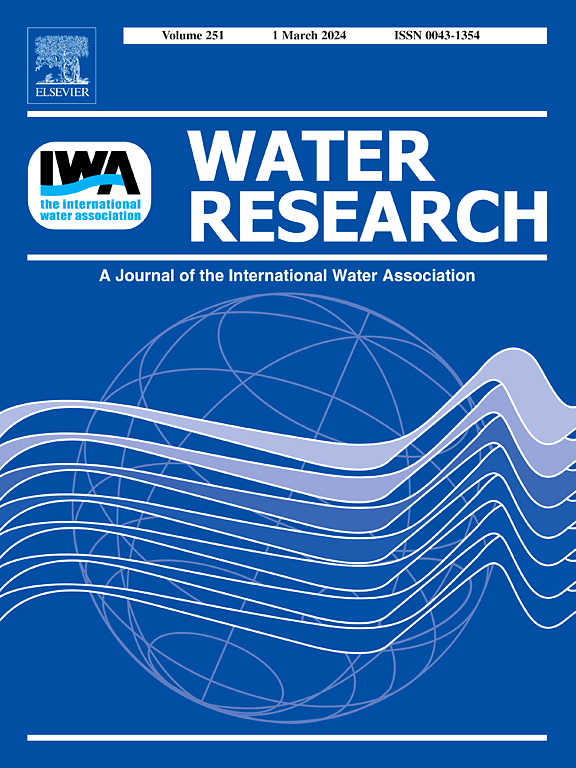Nanoplastics Pre-exposure to Microbial Consortium Influencing Their Ability to Degrade Pollutants: “Stagnation Effect” and “Self-recovery”
IF 11.4
1区 环境科学与生态学
Q1 ENGINEERING, ENVIRONMENTAL
引用次数: 0
Abstract
Nanoplastics (NPs) coexist with microorganisms in global water environmental systems, showing spatial-temporal differentiation. Therefore, studying the behavior of microorganisms previously exposed to NPs is particularly important. With 2,4-dichlorophenol (DCP)-degrading microflora as model microorganisms, this study found that higher dose (10, 100 mg/L) of polystyrene NPs pre-exposure inhibited bacterial DCP degradation prolonging the stagnation period, while lower dose (1 mg/L) of NPs on the contrary stimulated their degradation ability. The degradation delay coefficients (μ) showed a significant positive correlation with the duration of pre-exposure. Specifically, the μ values observed after 1 day, 3 days, and 9 days of pre-exposure to 10 mg/L NPs were 2.5, 2.9, and 3.8, respectively, while those for 100 mg/L NPs were 3.2, 4.0, and 5.1. In contrast, the control group without NPs exhibited a μ value of only 1.9. Pre-exposure caused NPs to enter bacterial cells, leading to oxidative damage, membrane impairment, and potential DNA damage. This carry-over toxicity suppressed the consortium's degradation efficiency of DCP. During the stagnation period, microorganisms were striving to redeem themselves, recovering their abilities of biofilm formation, chemotaxis and motility by upregulating the expression of wspA, mcp, and pilJ gene families, thus reinforcing inter-population regulatory cooperation, thereby restarting the DCP degradation. With the duration of pre-exposure to PS NPs increased, the recovery time required for bacterial communities also lengthened. It is crucial to pay attention to the biological responses to subsequent pollutants triggered by pre-exposure.

求助全文
约1分钟内获得全文
求助全文
来源期刊

Water Research
环境科学-工程:环境
CiteScore
20.80
自引率
9.40%
发文量
1307
审稿时长
38 days
期刊介绍:
Water Research, along with its open access companion journal Water Research X, serves as a platform for publishing original research papers covering various aspects of the science and technology related to the anthropogenic water cycle, water quality, and its management worldwide. The audience targeted by the journal comprises biologists, chemical engineers, chemists, civil engineers, environmental engineers, limnologists, and microbiologists. The scope of the journal include:
•Treatment processes for water and wastewaters (municipal, agricultural, industrial, and on-site treatment), including resource recovery and residuals management;
•Urban hydrology including sewer systems, stormwater management, and green infrastructure;
•Drinking water treatment and distribution;
•Potable and non-potable water reuse;
•Sanitation, public health, and risk assessment;
•Anaerobic digestion, solid and hazardous waste management, including source characterization and the effects and control of leachates and gaseous emissions;
•Contaminants (chemical, microbial, anthropogenic particles such as nanoparticles or microplastics) and related water quality sensing, monitoring, fate, and assessment;
•Anthropogenic impacts on inland, tidal, coastal and urban waters, focusing on surface and ground waters, and point and non-point sources of pollution;
•Environmental restoration, linked to surface water, groundwater and groundwater remediation;
•Analysis of the interfaces between sediments and water, and between water and atmosphere, focusing specifically on anthropogenic impacts;
•Mathematical modelling, systems analysis, machine learning, and beneficial use of big data related to the anthropogenic water cycle;
•Socio-economic, policy, and regulations studies.
 求助内容:
求助内容: 应助结果提醒方式:
应助结果提醒方式:


